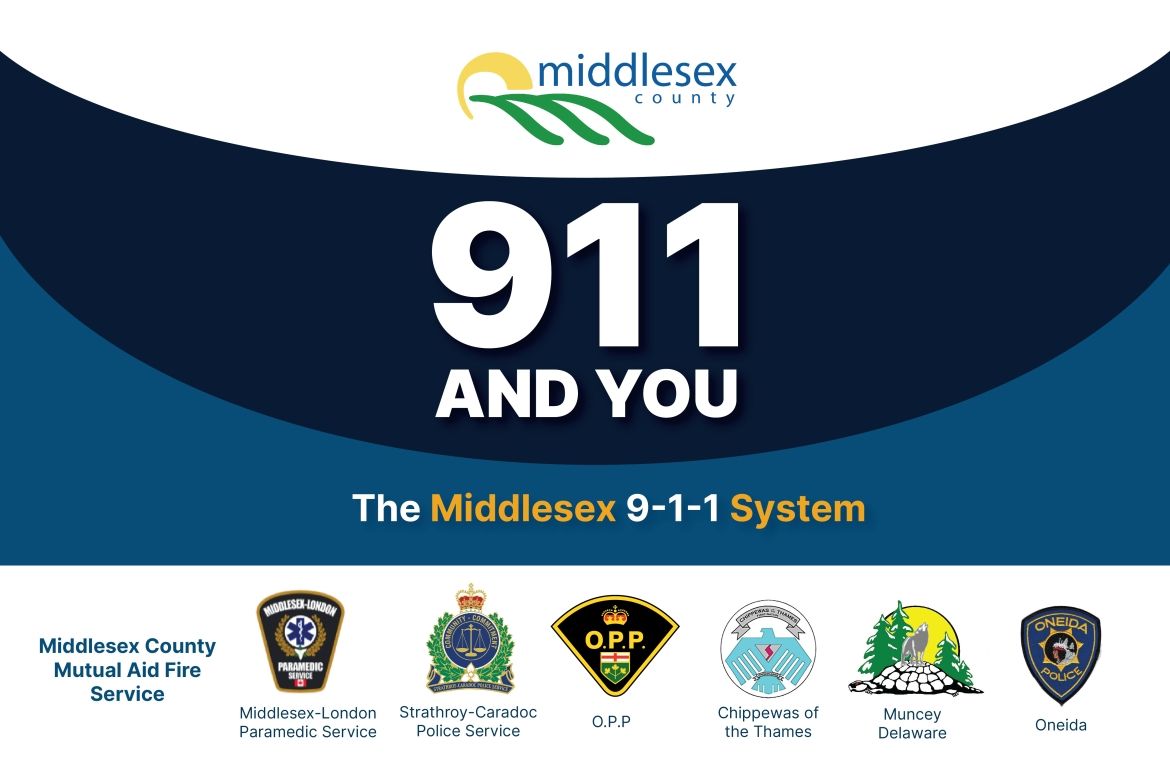
How 9-1-1 Works
Initially, a caller will contact a 9-1-1 operator who will direct them to one of three emergency service operators; police, ambulance or fire service, depending on the nature of the emergency. When the call is directed to the London Central Ambulance Communication Centre, the caller’s address and telephone number are displayed to the call receiver, provided they have called in on 9-1-1 from a residence or business (not cellphone).
If the pick-up location (patient location) is confirmed, the information from the display is downloaded into the ambulance communication service’s Computer Aided Dispatch system (CAD). The Ambulance Communications Officer (ACO) will then ask the caller a series of questions to prioritize the emergency call. Once a priority has been decided, the call is sent to the assigned ACO for paramedic unit assignment.
While the ambulance is on the way, the ACO will continue to ask some scene-specific questions (e.g. entrance location) and then provide the caller with instructions on how to help the patient prior to the arrival of paramedics. These instructions may include basic first aid and depending on the patient‘s condition, could also give callers instructions on how to help a choking person, or how to provide CPR,
You will also receive instructions from the ACO to do important things that will assist the paramedics when they arrive. Those instructions include unlocking doors, turning on lights, securing any pets and gathering medication and/or medical information.
Calling Using Voice over Internet Protocol (VoIP)
If you have Fixed Voice over Internet Protocol service, it is similar to land line service for 9-1-1. If you have Non-Fixed or Nomadic Voice over Internet Protocol service check with your service provider and inquire how 9-1-1 will work for you. NOTE: These types of Voice over Internet Protocol services may not have normal 9-1-1 capabilities.
REMEMBER: Cell and most Voice over Internet Protocol 9-1-1 calls will not display your personal and address information. The 9-1-1 call taker will have limited information regarding your personal and address information. Know your address information at all times. Be prepared to provide this information.
Text with 9-1-1
Service for the deaf, hard of hearing and speech impaired (DHHSI) is available in Middlesex County through our 9-1-1 service. This service allows DHHSI individuals to communicate with 9-1-1 operators during an emergency via text message. You can find out more about this important service and how to register at Text with 911.
Calling from a Land Line
Everyone should have access to a wire line (landline) telephone service. When you call 9-1-1 from a wire line service, your name, address and telephone number will be displayed to the call taker. This information is vital for the 9-1-1 call taker and emergency services dispatcher to determine an appropriate response from police, fire and/or ambulance.
Using Cell Phones
Be prepared to confirm your location or the location of the emergency. Make sure you include your name and 10 digit cell phone number. If driving, pull over to the side of the road and call 9-1-1 when safe to do so. Be aware of the road names around you.
For more information on the use of 9-1-1 and cell phones visit Canadian Wireless Telecommunications Association website
DO:
- Stay calm.
- Identify which emergency service you need: police, fire, ambulance.
- Stay on the line and answer all questions to the best of your ability. Listen for directions.
- Properly post your 911 property address sign number. These need to be seen at any time of day.
- Use only for emergencies where the health and/or safety of people or property is at risk.
- Keep a list of frequently dialed numbers near the telephone.
DON'T
- Call for directory assistance, to report power outages or to find information on road conditions and closures−call 2-1-1 for general emergency information.
- Program 9-1-1 into your speed dial on any phone service. You could accidentally press the speed dial number and unknowingly call 9-1-1.
*9-1-1 is not a joke. Please use responsibly
Important Non-Emergency Numbers
| Ontario Provincial Police.OPP | 1-888-310-1122 |
| Strathroy-Caradoc Police Services /SCPS | 519-245-1250 |
| Chippewas of the Thames, Munsee Delaware, Oneida, First Nation Police | 519-289-5577 |
Fire Departments / Administration
| Adelaide Metcalfe | 519-247-3687 |
| Lucan Biddulph | 519-227-4491 |
| Middlesex Centre | 519-666-0190 |
| North Middlesex | 519-294-6244 |
| Southwest Middlesex | 519-287-2015 |
| Strathroy-Caradoc | 519-245-1990 |
| Thames Centre | 519-268-7334 |
| Village of Newbury | 519-693-4941 |
| Middlesex County Primary Operations Centre | 519-471-2020 |
| Ministry of Transportation |
1-800-268-4686 |
| Middlesex County Fire Dispatch SCPS | 519-245-1300 |
Contact:
John Elston, Safety and Standards Officer
519-471-2020
